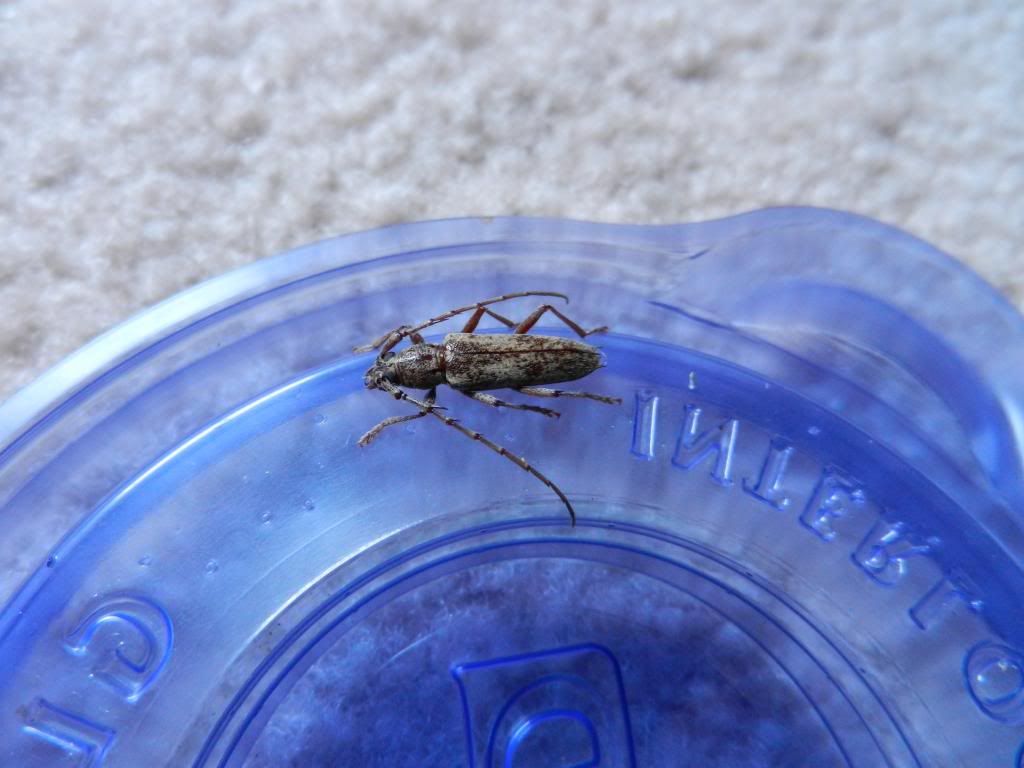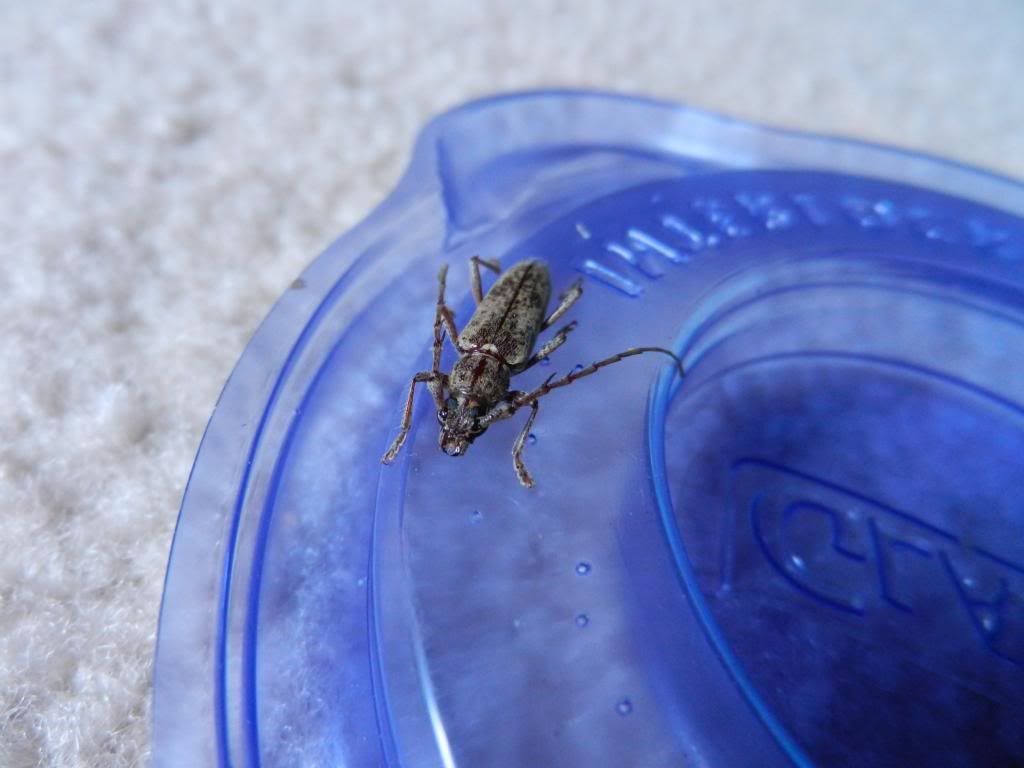|
|
Post by mantisdragon on Jun 26, 2013 14:47:56 GMT -8
I keep finding beetles like this on my front door attracted to the lights there. The beetle makes a noise when I pick it up, which was surprising to me because the only other beetle I know to make noises like that are bess bugs. I think it is a long horned beetle possibly, anyone know what it might be?  " alt=" "]  " alt=" "] |
|
|
|
Post by admin on Jun 26, 2013 15:27:42 GMT -8
Family Cerambycidae. Where's your location?
|
|
|
|
Post by mantisdragon on Jun 26, 2013 16:48:43 GMT -8
Location is Maryland. so its a Cerambycidae, a long horn beetle. Any ideas on what the genus or species is?
|
|
|
|
Post by admin on Jun 26, 2013 19:23:22 GMT -8
Not me, but someone will know.
|
|
|
|
Post by Bugman on Jun 27, 2013 2:48:22 GMT -8
Seems to be from the subfamily Prioninae.
|
|
|
|
Post by mantisdragon on Jun 27, 2013 6:26:24 GMT -8
What does it eat? and what is its habitat?
|
|
|
|
Post by Bugman on Jun 27, 2013 7:55:45 GMT -8
You can try feeding him some fruit maybe he will lick the sap up.
The larvae feed on dead wood.
|
|
|
|
Post by mantisboy on Jun 27, 2013 10:59:56 GMT -8
|
|
|
|
Post by bandrow on Jun 27, 2013 19:24:57 GMT -8
Greetings,
Mantisboy is correct - it is Elaphidion mucronatum, in the cerambycid subfamily Cerambycinae, tribe Elaphidiini. Your specimen is a female. They are strongly attracted to light as well as to fermenting sugar baits, so it should feed on some fruit or sugar water if offered. They are short-lived, so don't expect it to be a long-term pet, but it will be fun to observe for a week or so. The noise you hear is the beetle 'stridulating'. They make this defensive noise by rubbing opposing structures on the dorsum of the mesonotum and the inner surface of the pronotum against one another - kind of a 'rasp and file'. You should notice the beetle appearing to nod its head while squeaking.
Cheers!
Bandrow
|
|